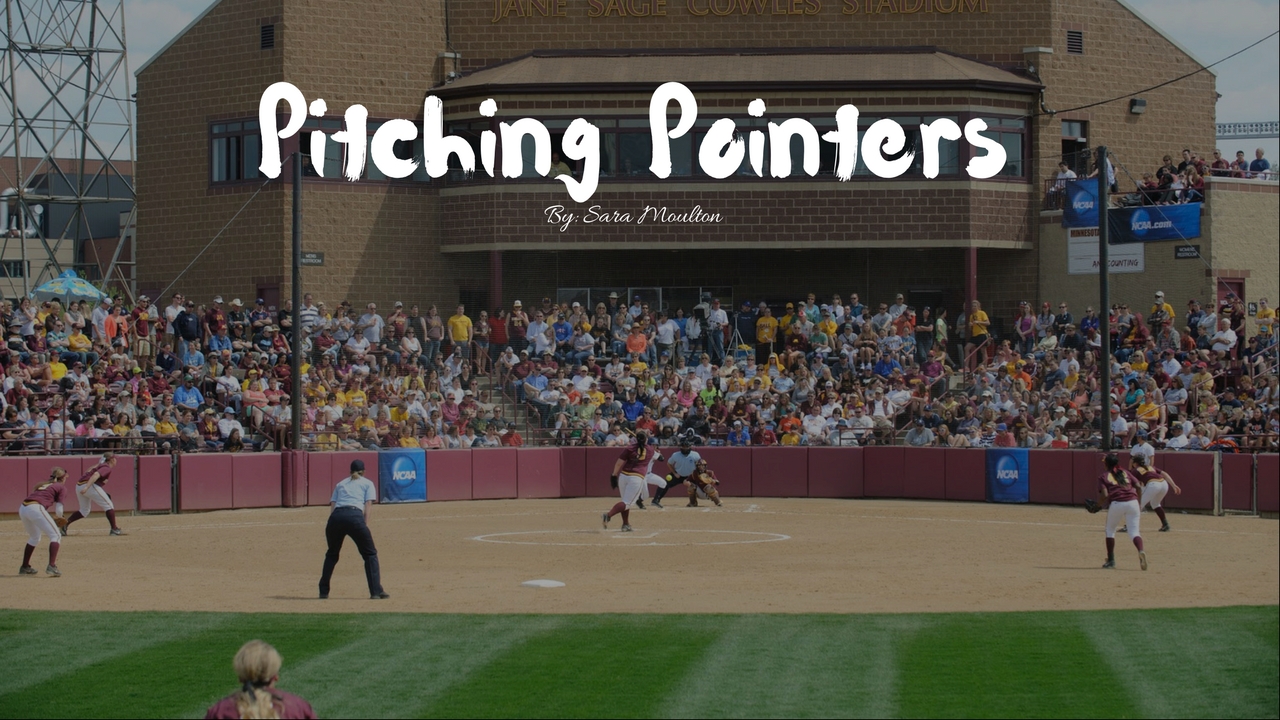How to Increase Pitching Speed in Softball

If you ask any softball pitcher what her number one goal over the off season months would be, most would answer to increase their pitching speed. There is a major focus on pitching speed in the sport of softball today. Even though experts would argue that accuracy will take a pitcher further than speed ever will.
Gaining pitching speed takes time and there are many factors that come into play. Pitchers who spend time on perfecting and maintaining proper pitching mechanics are the ones who will increase and maintain speed and accuracy. That’s the tricky part about pitching speed, being able to maintain it. You may go out to practice one day and something with the mechanics click and you throw significantly harder. Unless you have body awareness and are able to identify and imply the correction, you will lose the speed as fast as it arrived.
It’s impossible for softball pitchers to flip a switch and turn on speed. It can be very frustrating for a pitcher who is told over and over again by a parent or a coach to, “just throw harder.” If only it was that simple. Below are five factors and ways to help increase pitching speed.
Arm Speed:Every pitcher is going to generate a different arm circle and arm speed during their pitch. The arm can only move so fast around the circle before releasing the ball towards the catcher. Once a pitcher reaches maximum arm speed, it’s important to maintain it. Conditioning the arm comes with practice and lots of reps. When a pitcher gets tired, the arm speed is usually the first thing to go. When a pitcher loses her arm speed and whip, she won’t be able to produce the same amount of force on the snap and the ball will travel slower.
Legs:Every pitcher knows that speed comes mainly from the legs. Then how come pitchers, especially the younger ones, rarely use their legs? This is probably because they were never taught how to correctly. Every pitcher has a drive position, where they load and slightly bend at the knees before exploding off the mound towards their catcher. The tricky part is getting into that load or drive position every single time, especially when they get tired. The drive position is a key point to leg use, as well as striding out and dragging the back leg hard to finish.
Stride:The stride is the hidden treasure when it comes to increasing pitching speed. Pitchers should be able to stride their height and beyond when they push off the mound. It’s important that pitchers keep their back drag foot in contact with the ground until they release the ball in order to avoid being called for an illegal pitch. The stride is important because it inches the pitcher closer to the batter by cutting down the pitching distance. Pitchers who utilize the stride will always be secretly throwing from a closer distance and it will make the pitch feel effortless.
Size:Pitchers come in many different shapes, heights, length, and size. There are many physical factors that come into play when it comes to pitching speed also. Typically, pitchers who are tall and lanky will be able to stride out closer to the hitter every time, with less effort than a shorter pitcher who really has to incorporate legs every pitch. Then there are pitchers who have much stronger lower bodies than others, which also proves to be a huge advantage. It can be frustrating for parents and pitchers at the younger age levels who feel stuck at a certain pitching speed. Drills and form are a great focus, but sometimes it’s not enough and these pitchers will just have to be patient and let their body grow and develop before adding more.
Weight Lifting/Agility:Lifting weights and participating in agility training can be very beneficial to pitchers as long as it’s taught and monitored the right way. Weight lifting is going to put muscle on the body which will give the athlete more body mass and overall strength. Agility training will help develop and utilize the quick twitch muscles which are also a key to pitching speed. The pitchers who throw the hardest have a strong whip and tow drag during their pitch.
There are always ways to increase pitching speed in softball. If you are a pitcher and feel stuck at a certain speed, start with polishing your mechanics. When something mechanical is out of whack during the pitch, the timing may be thrown off, resulting in a slower outcome. Some days, pitchers who normally throw hard may feel slow. This happens and it’s important not to panic. Stick to the speed drills you have incorporated into your practice and lesson routines. Keep the mechanics consistent, get the arm and whip going, load into the legs at the start of the pitch, push off hard, stride out to your height and beyond, and drag hard through the finish. If a pitcher is able to do all of these things every single pitch, on top of naturally growing and getting stronger every day on her own, she will be well on her way to increasing pitching speed.





